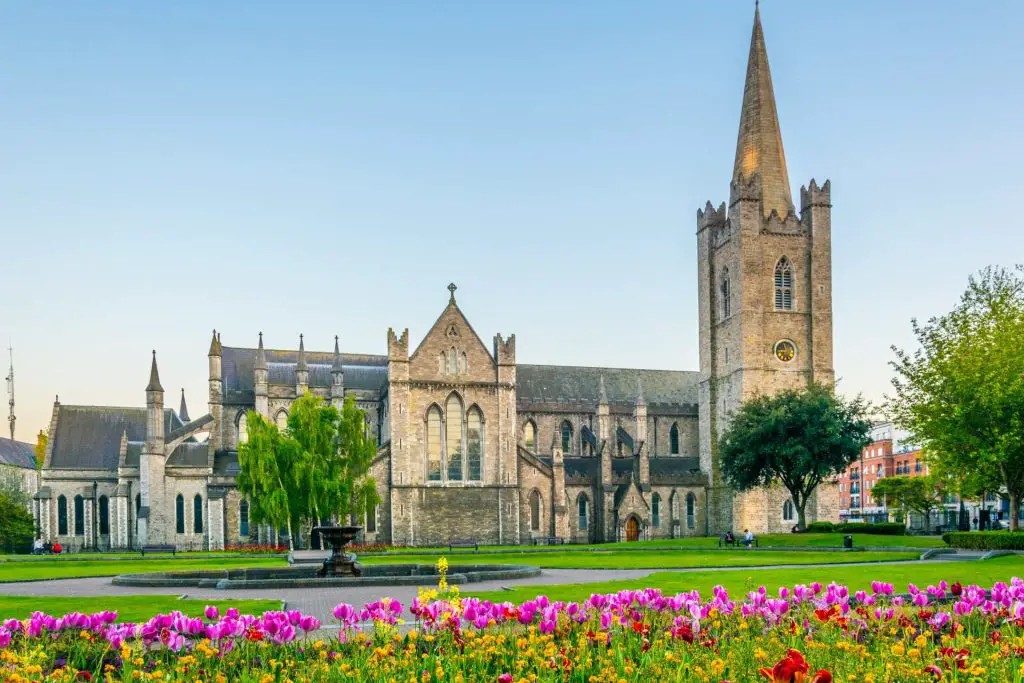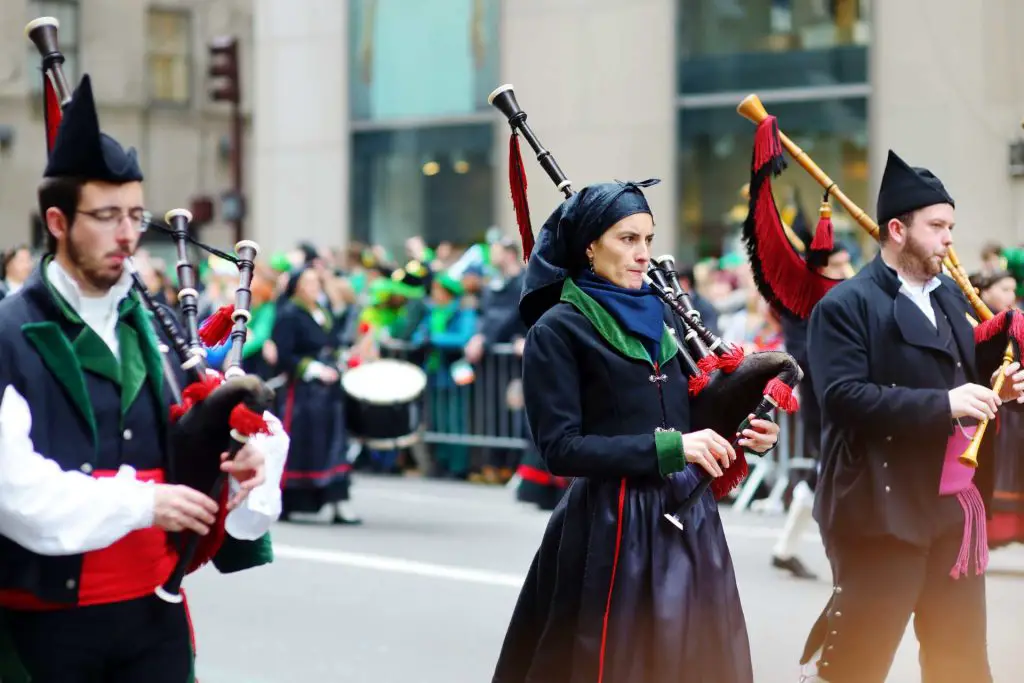While St. Patrick’s Day has evolved into a secular celebration of Irish culture, cuisine, and revelry across the globe, at its roots the holiday commemorates the extraordinary life of a humble man whose vision and tenacity brought Christianity to the Emerald Isle. Through his unwavering perseverance and deep faith, St. Patrick transformed the religious landscape of Ireland — the very reason his feast day on March 17th is observed so fervently by those of Irish descent worldwide. Though his origins were modest, St. Patrick’s impact has transcended centuries, cultures, and continents, making him one of the most venerated saints in the entire Christian world. Let’s delve deeper in St. Patrick’s Day 2024: the visionary saint known throughout the world. St. Patrick (active in the 5th century, across Britain and Ireland, celebrated on March 17) serves as Ireland’s patron saint and has been heralded as the nation’s apostolic figure. He is renowned for introducing Christianity to Ireland and likely played a role in spreading Christianity among the Picts and Anglo-Saxons. His life and deeds are primarily known through two brief texts: the Confessio, a personal religious reflection, and his Letter to Coroticus, which criticizes the British for their treatment of Irish Christians.

St. Patrick’s Day 2024: who was really St. Patrick?
Patrick was the son of a Romanized family in Britain. At the age of 16, he was captured by Irish raiders from his father Calpurnius’s home, who was a deacon and a local official of minor status, and taken as a slave to Ireland. There, he endured six years of hardship working as a shepherd, during which he deepened his Christian faith. Following a dream that showed him his escape route, he escaped his captor and managed to secure a way back to Britain. Back home, he faced near starvation and experienced another short period of captivity before finally reuniting with his family. It is believed that after his return, he briefly visited the European mainland. The most memorable account in the Confessio describes a vision Patrick had after his return to Britain, in which he received a letter from someone named Victoricus titled “The Voice of the Irish.” As he read, Patrick imagined he could hear a group of Irish people pleading with him to return to them. Overwhelmed, he admits, “I could read no more.” Yet, his limited education made him hesitant to answer this call for a considerable time. Even as he prepared to sail back to Ireland, he was plagued by doubts about his suitability for the mission. Once back on Irish soil, his reservations dissipated. With unwavering faith, he traveled extensively, baptizing and confirming with relentless dedication. He adeptly navigated the political landscape, offering gifts to leaders without accepting any in return. He faced imprisonment at one point, and in another instance, he expressed his heartfelt goodbye to his followers who had been killed or abducted by Coroticus’s forces.
Despite his just dealings with the Celtic tribes, he always lived under the threat of becoming a martyr. His recounting of these challenges in what he termed his “arduous episcopate” served as his defense against the accusation, which was painfully supported by his church superiors in Britain, that he had sought his position for its own sake. Indeed, Patrick was a man of humility, continually expressing gratitude to God for choosing him to guide many who once worshipped “idols and unclean things” to become “the people of God.”

St. Patrick’s Day 2024: the authentic tale of St. Patrick
Common depictions present St. Patrick as an aged, bearded bishop, robed majestically, with a staff in hand, confronting serpents. This image ties back to a famed legend where he is believed to have prayed away all snakes from Ireland. Yet, historical records paint a different picture of St. Patrick, who in the 5th century was actually named Maewyn Succat, and had never encountered a snake nor used shamrocks in his sermons.
Unveiling St. Patrick’s genuine story
As we said, St. Patrick, contrary to popular belief, was not Irish. Born around 450 AD, during the Roman withdrawal from Britain, he was the son of a Christian deacon with a modest estate in Bannavem Taburniae, a location presumed to be on the west coast near present-day Bristol, straddling the modern Wales-England border. Some theories suggest Patrick’s Scottish heritage.
St. Patrick’s Day 2024: captured by Irish pirates
At sixteen, Patrick was kidnapped by Irish pirates from the coast near his home and sold into slavery in Ireland. For six years, he worked as a shepherd in County Antrim’s Slemish Mountain, where he often prayed intensely.
Voices in captivity
During his enslavement, Patrick became fluent in Gaelic and acquainted with Druid practices. Despite failed escape attempts, one night a voice guided him to a ship ready for his escape, leading him to journey approximately 184 miles on foot to reach it.
St. Patrick’s Day 2024: an unusual refusal
Seeking passage to Britain from Ireland’s east coast, a pagan ship captain demanded Patrick perform a ritual gesture of sucking his breast, symbolizing submission. Patrick refused but was still allowed onboard, where he attempted to convert the crew.
Visions and missions
Back in Bannavem Taburniae, Patrick experienced a vision of an angel urging him to return to Ireland. He also felt compelled to atone for an undisclosed sin from his youth, seeing his mission in Ireland as a form of penance.
St. Patrick’s Day 2024: challenges and theological studies
In Ireland, Patrick faced adversity, including beatings and imprisonment. He studied Latin and Christian theology in France, later being ordained as a priest and bishop.
Myths posthumously embellished
Centuries after his death, more fantastical tales of Patrick emerged, including confrontations with druids and miraculous fasts on mountains, ascribing him powers like banishing snakes — which is historically impossible given Ireland’s lack of snakes due to geographical isolation.
St. Patrick’s Day 2024: misattributed symbols
The legend of the shamrock is perhaps the most beloved, portraying Patrick using the three-leaved plant to illustrate the Holy Trinity’s concept to a skeptic. On St. Patrick’s Day, March 17, it is customary for the Irish to wear shamrocks, Ireland’s national flower, in honor of him. However, we have to reveal that the association of Patrick with the shamrock emerged much later, with the first reference dating back to 1726, debunking the notion that he used it to explain the Holy Trinity.

Pilgrimages
Croagh Patrick
Located in County Mayo, western Ireland, Croagh Patrick is a significant religious site and the focal point of an annual pilgrimage on the last Sunday of July, known as Reek Sunday. Legend holds that Patrick fasted on this mountain for 40 days and nights, afterwards casting out all serpents, demons, and sorcerers into a nearby lake, Log na nDeamhan (Demon’s Hollow). Every year, thousands of pilgrims ascend the 765-meter (2,510-foot) mountain, some barefoot, starting before dawn. Along the path, three Bronze Age cairns, referred to as stations, allow pilgrims to pause for prayer. A chapel at the summit hosts masses throughout the day. Another key pilgrimage location is St. Patrick’s Purgatory on Station Island in Lough Derg, County Donegal. According to tradition, Patrick was shown the torments of hell through a cave on the island, motivating him to more fervently persuade skeptics of the Christian afterlife. A monastic community was established nearby, and an Augustinian priory was founded on the island between the 12th and 13th centuries. From the 16th century, a tradition of a three-day, rigorous pilgrimage began, entailing continuous prayer, fasting, and barefoot travel over rocky terrain, mainly during the summer.
Celebrating Saint Patrick in Ireland
In Ireland, Saint Patrick’s Day is more than just a raucous celebration — it’s a national holiday rich with history, heritage, and profound cultural significance. On March 17th each year, the Emerald Isle comes alive with festivities honoring the 5th century patron saint who brought Christianity to its shores. Dublin lies at the heart of Saint Patrick’s Day in Ireland, hosting a massive parade and festival that draws hundreds of thousands to its streets. The capital’s St. Patrick’s Festival spans five days of revelry, featuring céilithe (traditional Irish dances), street theater, funfairs, music trails, readings, pub games, walking tours, and seemingly infinite supplies of Irish stout and whiskey. But the centerpiece remains the March 17th parade itself — a two-hour kaleidoscope of pageantry, marching bands, dancers, and eclectic floats winding through the city center. While Dublin’s celebration grabs global attention, festivities play out in towns and villages across the island as well. From Armagh to Cork, local communities host their own parades and events showcasing Irish arts, dance, music, and sports. Restaurants and pubs brim with traditional bacon and cabbage or lamb stew as locals gather for meals and pints of Guinness. At its core, Saint Patrick’s Day is a quintessentially Irish affair. The holiday marks the anniversary of the death of Patrick in the 5th century and the start of Lent, a 40-day period of eating simply and reflecting on spiritual matters. Many attend church services or participate in longstanding customs like swinging a burnished ball of crystal known as a boghmór to bless the countryside. But the saint’s legacy extends far beyond religion. The shamrock’s connection sparks the islandwide greening of everything from buildings to beer on March 17th, with Counties Louth and Down hosting colorful slámadóireacht or “greening the mills” ceremonies. At its heart, Saint Patrick’s Day encapsulates the pride, traditions, and unyielding spirit of the Irish people. It’s a kaleidoscopic celebration of the island’s culture and heritage. Whether joining raucous street festivals, cheering on parades, feasting on Irish cuisine, or simply raising a pint of stout, the day allows those of Irish descent to revel in their vibrant roots.

St. Patrick’s Day 2024: the US
Each March 17th, a wave of green sweeps across the United States as the country commemorates Saint Patrick’s Day. What began as a modest religious holiday to honor the 5th century patron saint of Ireland has blossomed into one of the biggest celebrations of Irish-American culture. The annual festivities draw revelers from all backgrounds, but nowhere does Saint Patrick’s Day take on quite as much grandeur as in the major cities with deep Irish roots. New York City hosts the largest and oldest civilian parade, which has been painting the streets of Manhattan green since 1762. Nearly 2 million spectators line the parade route each year to marvel at the colorful floats, bagpipe troops, and throngs of marchers celebrating Irish pride. Across the country in Chicago, the Chicago River has been dyed bright emerald green every year since 1962, a whimsical tradition that kicks off the city’s raucous St. Patrick’s Day celebrations. A massive parade winds through downtown, accompanied by crowds of green-clad revelers toasting the day with ice-cold beers and Irish whiskeys. The revelry reaches a fever pitch as night falls over the city’s Irish pubs and bars. From Boston to Savannah, Ga. to San Francisco, no major metropolis is left untouched by Saint Patrick’s Day merriment. Parades brimming with Celtic pride and locally-brewed Irish stouts and whiskeys top the agenda. Traditional folk music rings out from city parks and pubs. Those with an appetite indulge in hearty Irish-American fare like corned beef and cabbage or beef and Guinness stew. While Saint Patrick’s Day maintains deep religious significance in Ireland, on American shores the holiday has taken on a life of its own as a secular celebration of Irish culture. Across the United States, March 17th serves as a reminder of the incredible contributions Irish immigrants have made in shaping the nation’s heritage. It’s a boisterous, vivid display of how the United States has opened its arms to global traditions and cultures for centuries. So raise a pint, don some green, and start practicing your jig — Saint Patrick’s Day in America is a party 200 years in the making!
The Celebration of Saint Patrick in Italy
While Saint Patrick’s Day is celebrated most fervently in Ireland and by Irish communities around the world, the festivities have also taken root in Italy in recent decades. On March 17th each year, major cities like Rome, Milan, and Naples host lively parades, concerts, and festivals honoring the patron saint of Ireland. Revelers don green clothing, indulge in Irish drinks like Guinness and Irish whiskey, and enjoy traditional Irish music and dance performances. Though the celebrations are relatively new to Italy compared to Ireland itself, they have become a beloved annual tradition for Italians to embrace Irish culture and the spirit of Saint Patrick’s Day. In Rome, the heart of the celebrations takes place in the streets surrounding the historic Irish embassy to the Vatican. A parade featuring colorful floats, Irish dancers, and marching bands weaves its way through the neighborhoods. The route eventually ends at the Piazza della Repubblica, where live music, food vendors selling Irish fare like stews and soda bread, and a lively outdoor celebration stretches late into the evening. Milan embraces Saint Patrick’s festivities with equal gusto. One of the largest parades in Italy happens in the streets near the city’s famed Duomo cathedral. Thousands of spectators line the parade route to watch performers, floats, and groups representing Italian-Irish cultural organizations. After the parade, an Irish village pops up in the Parco Sempione, featuring music stages, dancing exhibitions, and booths selling Irish food and crafts. The celebrations provide a chance for Italians to revel in Irish culture and camaraderie. While the religious roots of the day commemorate Saint Patrick driving the snakes from Ireland in the 5th century, the modern festivities in Italy are a joyful, secular way to spend the spring day celebrating inclusiveness, good cheer, and maybe indulging in one Irish beer or two.

St. Patrick’s Day 2024: the bottom line
St. Patrick’s Day has evolved into a beloved global celebration of Irish culture, cuisine and revelry. While the holiday commemorates the extraordinary life and vision of the 5th century patron saint who brought Christianity to Ireland, the modern festivities have taken on a festive, secular spirit. The authentic story of St. Patrick’s life is different from many of the popular myths and legends that emerged centuries after his death. He was not actually Irish, but rather a British man captured by Irish raiders as a teen and enslaved for six years before eventually returning to Ireland as a missionary. In Ireland itself, St. Patrick’s Day remains a powerful display of national pride and heritage. Massive parades, traditional feasts, religious observances and customs like “greening” entire towns unfold across the Emerald Isle on March 17th each year. The holiday has taken on an even more raucous, party-like atmosphere in the United States, where major cities with large Irish diasporas go all-out with parades, pub festivities, Irish music and dance. No longer just a religious occasion, St. Patrick’s Day in America celebrates the enormous contributions of Irish immigrants to the nation’s culture and identity.
While more recently adopted, the St. Patrick’s Day spirit has also taken root in Italy, with cities like Rome and Milan hosting exuberant parades, concerts and outdoor celebrations embracing Irish culture, food and drink each March 17th. The global enthusiasm for St. Patrick’s Day showcases how this once religious feast day has evolved into a unifying, joyful celebration of Irish heritage around the world. Keep following us to discover the world and learn everything about our LCN App.
Lá fhéile Pádraig sona dhaiobh!” (Happy St. Patrick’s Day!)


